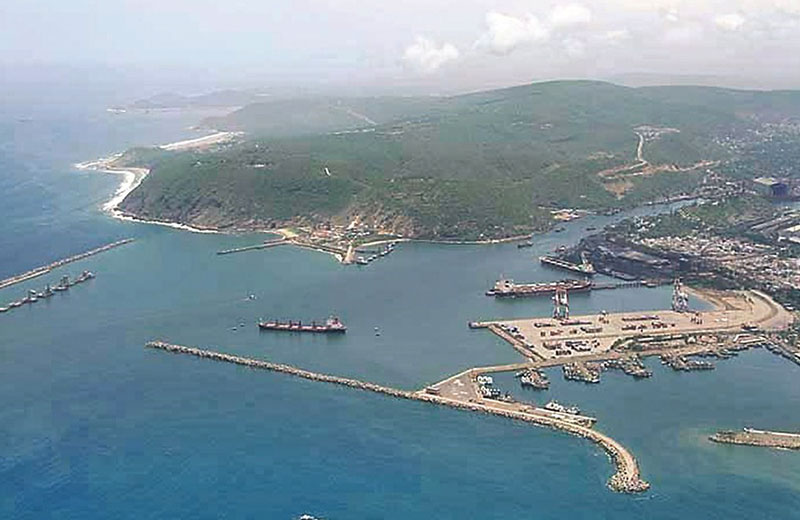[vc_row][vc_column][vc_column_text]
Indian officials have said the Vishakhapatnam port is now ready to serve Nepal-bound cargos, with the authorities concerned fixing the tariff rate and allotting space for setting up a Nepali Consulate General office.
During former Prime Minister KP Sharma Oli’s visit to India in February, the southern neighbour had agreed to allow Nepal to use the deep-sea port in southern India.
Speaking at Trade Meet 2016 on Friday, Sushil Mulchandani, chief operating officer of Vishakhapatnam Container Terminal, said the Container Corporation (CONCOR) fixed the tariff rate for Nepal-bound containers after holding consultations with Indian authorities concerned.
CONCOR-a subsidiary of the Indian Railways-is responsible for ferrying Nepal-bound cargo under the Railway Service Agreement between the two countries.
India had agreed in principle to allow Nepal to use the port in 2009, but a final agreement was delayed after Nepal opposed the double-lock system India imposed on Nepal-bound cargos.
Vishakhapatnam port has two harbours with an average depth of water of 17 meters which allows large ships to dock, said Mulchandani, adding the port is situated just 12km away from the main highway.
The port has a fully computerised system to facilitate cargo movement. Munchandani said Nepali importers could track their containers, even remotely from Nepal. He said the post authority plans to launch a smartphone application to facilitate traders in this regard.
Currently, Nepal uses a single sea transit route-Kolkata’s Haldiya Port-for its trade with countries other than India. Nepali traders have been complaining about an old railway system, inadequate yard area, traffic congestion and labour problems, among others, at the Kolkata port, resulting in higher transit costs.
The operationalisation of Vishakhapatnam port is expected to minimise transit costs for traders. Rajan Sharma, past president of Nepal Freight Forwarders Association (NEFFA), said the cost of import through the port would be less compared to that through the Kolkata port. “Procedures related to shifting and forwarding of cargos, release of goods by ships and customs clearance, among other, are relatively cheaper,” he said.
According to a NEFFA study conducted five years ago, the cost of third-country trade can be slashed by 15 percent while doing trade through Vishakhapatnam port.
Traders have to undergo lengthy procedures while transporting their goods through the Kolkata port. They have to cross 34 hurdles just to complete the clearance process, according to NEFFA. “At Kolkata port, it usually takes 42 days for the clearance done, while shipping companies allow only 28 days of turnaround time for containers. This has forced traders to pay detention charges, raising their cost of doing business,” said Sharma.
He claimed the clearance process takes just nine days at the Vishakhapatnam port. “In addition, less traffic congestion will help avoid detention charges,” he said.
Container movement at the Kolkata port has been increasing at 20 percent annually, according to Gautam Gupta, traffic manager at Kolkata Port Trust. He admitted inadequate yard space has been resulting in problems for traders while unloading goods.
Gupta, however, added the Kolkata port authority has been considering expanding the yard capacity and simplifying procedures to facilitate traders. “Recently, we have hired a consultant to recommend the customs clearing process for Nepali traders. We are also working to introduce online documentation process.”
[/vc_column_text][/vc_column][/vc_row]








